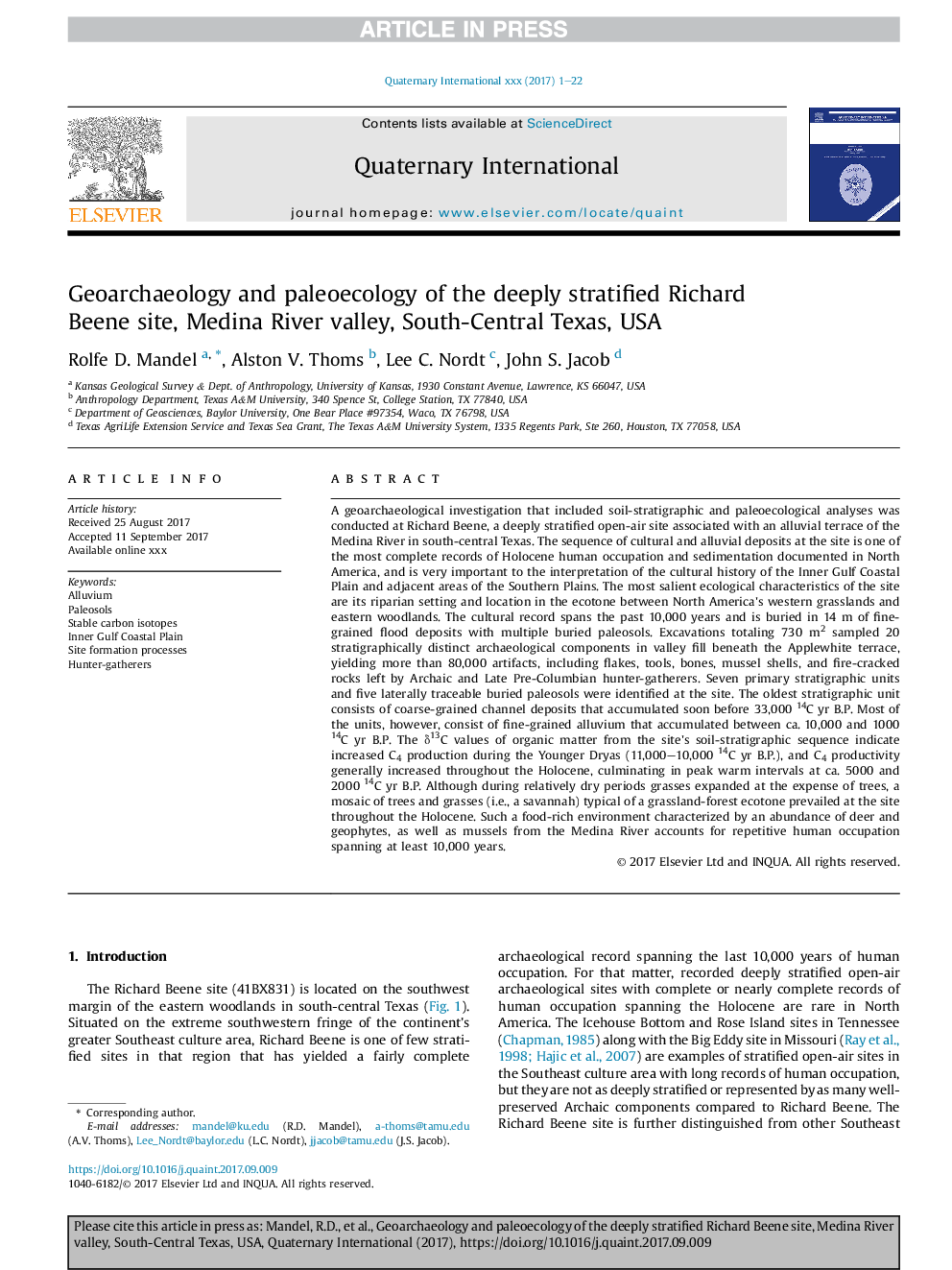| کد مقاله | کد نشریه | سال انتشار | مقاله انگلیسی | نسخه تمام متن |
|---|---|---|---|---|
| 7451084 | 1484060 | 2018 | 22 صفحه PDF | دانلود رایگان |
عنوان انگلیسی مقاله ISI
Geoarchaeology and paleoecology of the deeply stratified Richard Beene site, Medina River valley, South-Central Texas, USA
دانلود مقاله + سفارش ترجمه
دانلود مقاله ISI انگلیسی
رایگان برای ایرانیان
کلمات کلیدی
موضوعات مرتبط
مهندسی و علوم پایه
علوم زمین و سیارات
زمین شناسی
پیش نمایش صفحه اول مقاله

چکیده انگلیسی
A geoarchaeological investigation that included soil-stratigraphic and paleoecological analyses was conducted at Richard Beene, a deeply stratified open-air site associated with an alluvial terrace of the Medina River in south-central Texas. The sequence of cultural and alluvial deposits at the site is one of the most complete records of Holocene human occupation and sedimentation documented in North America, and is very important to the interpretation of the cultural history of the Inner Gulf Coastal Plain and adjacent areas of the Southern Plains. The most salient ecological characteristics of the site are its riparian setting and location in the ecotone between North America's western grasslands and eastern woodlands. The cultural record spans the past 10,000 years and is buried in 14 m of fine-grained flood deposits with multiple buried paleosols. Excavations totaling 730 m2 sampled 20 stratigraphically distinct archaeological components in valley fill beneath the Applewhite terrace, yielding more than 80,000 artifacts, including flakes, tools, bones, mussel shells, and fire-cracked rocks left by Archaic and Late Pre-Columbian hunter-gatherers. Seven primary stratigraphic units and five laterally traceable buried paleosols were identified at the site. The oldest stratigraphic unit consists of coarse-grained channel deposits that accumulated soon before 33,000 14C yr B.P. Most of the units, however, consist of fine-grained alluvium that accumulated between ca. 10,000 and 1000 14C yr B.P. The δ13C values of organic matter from the site's soil-stratigraphic sequence indicate increased C4 production during the Younger Dryas (11,000-10,000 14C yr B.P.), and C4 productivity generally increased throughout the Holocene, culminating in peak warm intervals at ca. 5000 and 2000 14C yr B.P. Although during relatively dry periods grasses expanded at the expense of trees, a mosaic of trees and grasses (i.e., a savannah) typical of a grassland-forest ecotone prevailed at the site throughout the Holocene. Such a food-rich environment characterized by an abundance of deer and geophytes, as well as mussels from the Medina River accounts for repetitive human occupation spanning at least 10,000 years.
ناشر
Database: Elsevier - ScienceDirect (ساینس دایرکت)
Journal: Quaternary International - Volume 463, Part A, 2 January 2018, Pages 176-197
Journal: Quaternary International - Volume 463, Part A, 2 January 2018, Pages 176-197
نویسندگان
Rolfe D. Mandel, Alston V. Thoms, Lee C. Nordt, John S. Jacob,